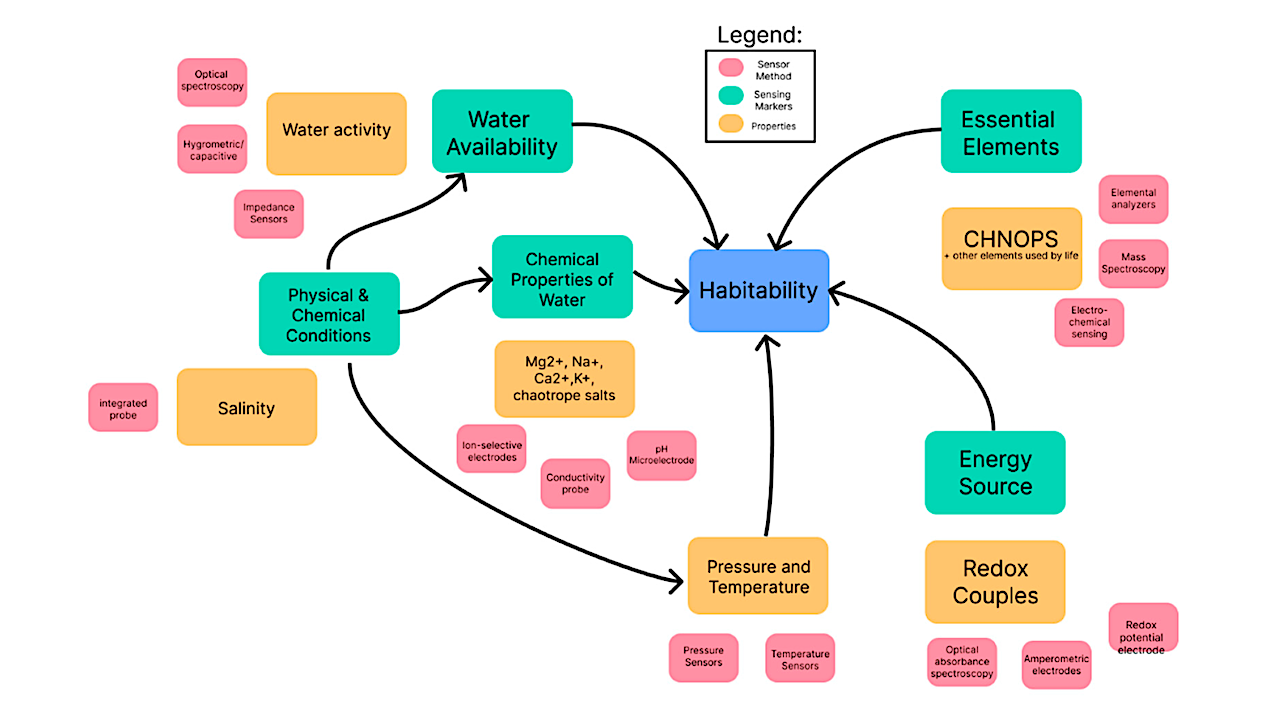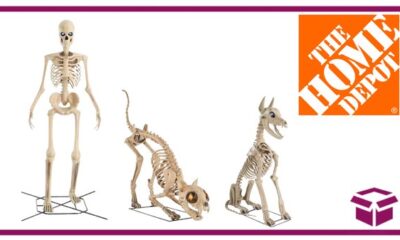Science
New Bioinspired Instrument Aims to Assess Planetary Habitability

Astrobiology researchers are exploring the potential of a groundbreaking instrument designed to assess the habitability of other planetary bodies. The proposed device, known as the **Total Habitability Instrument**, aims to measure essential indicators such as liquid water, CHNOPS elements, and other nutrients necessary for life. This innovative technology could significantly enhance our understanding of environments beyond Earth, particularly in the context of planetary exploration.
The primary goal of astrobiology is to identify whether extraterrestrial environments can support life. This involves analyzing several key factors that contribute to habitability. Liquid water is a critical requirement, as it is essential for all known forms of life. Additionally, elements such as carbon, hydrogen, nitrogen, oxygen, phosphorus, and sulfur—collectively referred to as CHNOPS—are fundamental building blocks for biological processes. The new instrument is designed to integrate the detection of these elements and nutrients into a single, portable unit.
Researchers have recognized the need for a comprehensive approach to planetary exploration. Current methods often require multiple instruments, each dedicated to specific measurements. This can complicate missions and increase costs. The **Total Habitability Instrument** seeks to streamline this process by combining various sensing technologies.
Innovative Sensing Technologies
The development of the Total Habitability Instrument involves the integration of various advanced sensing technologies. These include spectrometers, which can analyze the chemical composition of samples, and sensors capable of detecting physical properties like temperature and pressure. By employing these technologies, the instrument can provide a holistic view of a planetary environment’s potential for supporting life.
One of the key advantages of this bioinspired design is its adaptability to different planetary conditions. Whether deployed on Mars, Europa, or exoplanets, the instrument is expected to adjust its measurement techniques to suit the specific characteristics of each environment. This flexibility is crucial for future missions, especially as scientists aim to explore increasingly distant locations.
The implications of this technology extend beyond mere exploration. Understanding the habitability of other planets could inform future missions aimed at establishing human presence on those bodies. As space agencies prepare for potential manned missions, having reliable tools to assess environmental conditions will be paramount.
Collaboration and Future Prospects
The research and development of the Total Habitability Instrument is a collaborative effort involving multiple institutions and organizations within the field of astrobiology. As advancements continue, future iterations of the instrument could include enhanced capabilities, such as the ability to analyze biological signatures or detect organic molecules.
The exploration of habitable environments is not just a scientific endeavor; it also sparks public interest in space exploration. As missions to other planets become more feasible, the prospect of discovering life beyond Earth captivates imaginations worldwide. The Total Habitability Instrument represents a significant step forward in this pursuit, combining cutting-edge technology with a comprehensive understanding of what makes a planet capable of supporting life.
In conclusion, the development of the Total Habitability Instrument marks a pivotal moment in astrobiology and planetary exploration. By integrating various sensing technologies into a single device, researchers aim to enhance our understanding of habitable environments beyond Earth. As exploration efforts ramp up, this innovative instrument could play a vital role in answering one of humanity’s most profound questions: Are we alone in the universe?
-

 Politics3 weeks ago
Politics3 weeks agoHamas Chief Stresses Disarmament Tied to Occupation’s End
-

 Science3 weeks ago
Science3 weeks agoOhio State Study Uncovers Brain Connectivity and Function Links
-

 Entertainment3 weeks ago
Entertainment3 weeks agoMegan Thee Stallion Exposes Alleged Online Attack by Bots
-

 Science1 month ago
Science1 month agoResearchers Challenge 200-Year-Old Physics Principle with Atomic Engines
-

 World2 weeks ago
World2 weeks agoFDA Unveils Plan to Cut Drug Prices and Boost Biosimilars
-

 Entertainment3 weeks ago
Entertainment3 weeks agoPaloma Elsesser Shines at LA Event with Iconic Slicked-Back Bun
-

 Top Stories3 weeks ago
Top Stories3 weeks agoFederal Agents Detain Driver in Addison; Protests Erupt Immediately
-

 Business3 weeks ago
Business3 weeks agoMotley Fool Wealth Management Reduces Medtronic Holdings by 14.7%
-

 Entertainment2 weeks ago
Entertainment2 weeks agoBeloved Artist and Community Leader Gloria Rosencrants Passes Away
-

 Business3 weeks ago
Business3 weeks agoHome Depot Slashes Prices on Halloween Favorites Up to 75%
-

 Politics4 weeks ago
Politics4 weeks agoNHP Foundation Secures Land for 158 Affordable Apartments in Denver
-

 Top Stories3 weeks ago
Top Stories3 weeks agoOrioles Hire Craig Albernaz as New Manager Amid Rebuild









